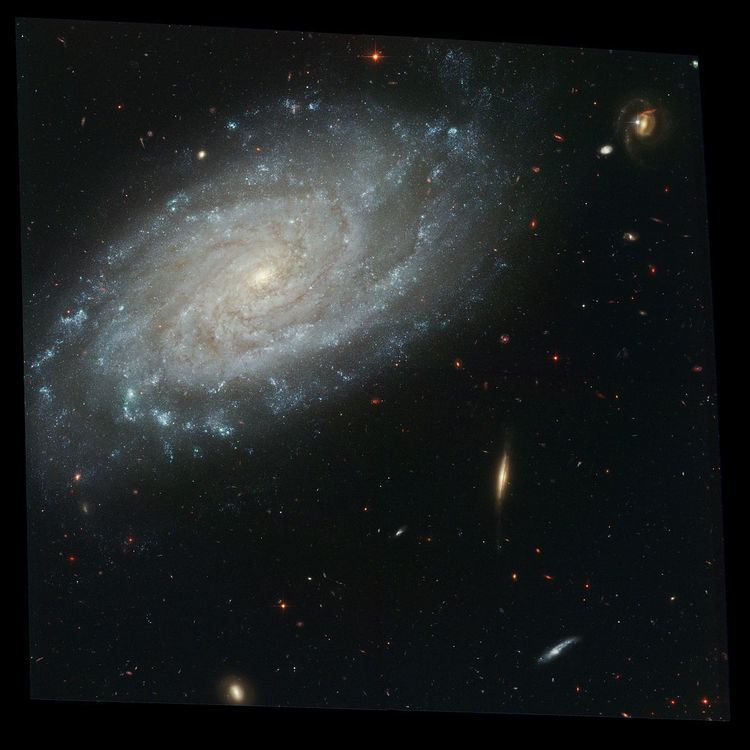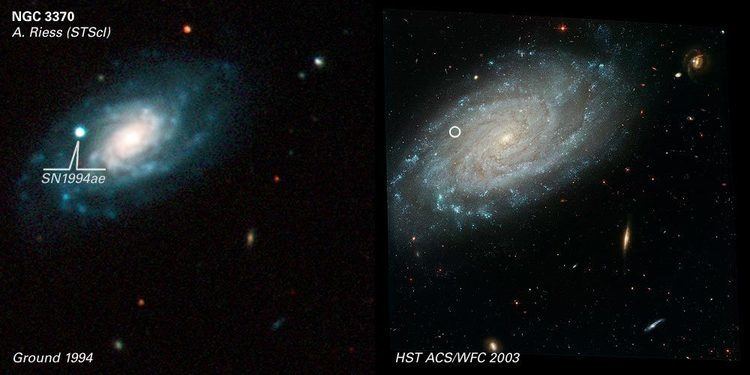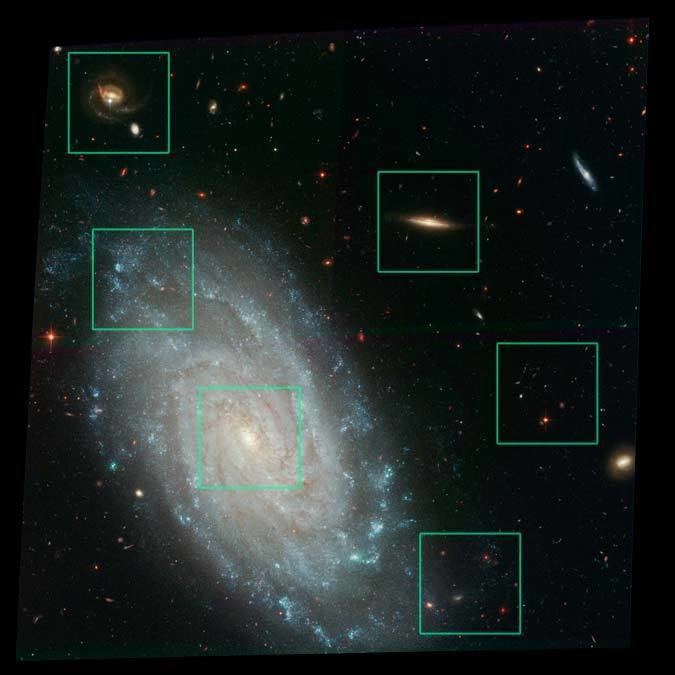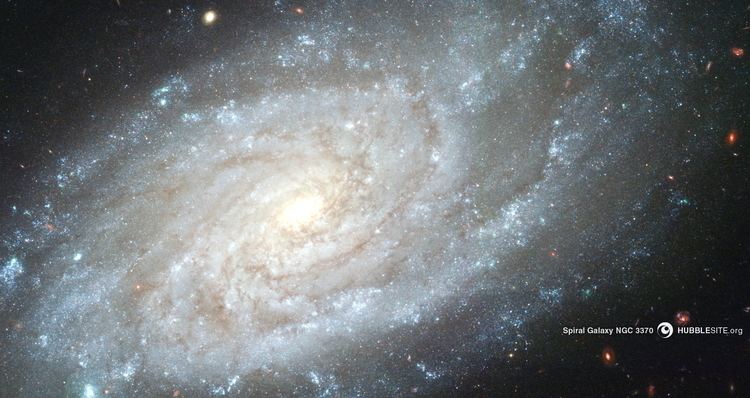Right ascension 10 47 04.0 Redshift 1279 ± 4 km/s Type SA(s)c III Magnitude 12.3 Apparent magnitude (V) 12.3 | Declination +17° 16′ 25″ Distance 98 Mly Apparent size (V) 3′.2 × 1′.8 | |
 | ||
Similar NGC 1512, 2MASX J00482185‑2507365 occulting, Hoag's Object, NGC 3384, NGC 1300 | ||
Altera enigma ngc 3370
NGC 3370 (also known as UGC 5887 or Silverado Galaxy) is a spiral galaxy about 98 million light-years away in the constellation Leo. It is comparable to our own Milky Way both in diameter (100,000 light years) and mass (1011 solar masses). NGC 3370 exhibits an intricate spiral arm structure surrounding a poorly defined nucleus.
Contents

Altera enigma ngc 3370
History

NGC 3370 was likely discovered by William Herschel, who provided it with the designation II 81. His son John later designated it 750. William Herschel cataloged I 80 to NGC 3348 before and II 82 to NGC 3455 after NGC 3370.
The object has a surface brightness of 13 and a position angle (PA) of 140°.

On November 14, 1994, S. Van Dyk and the Leuschner Observatory Supernova Search discovered a supernova in NGC 3370 at 10h 44m 21.52s +17° 32′ 20.7′′, designated SN 1994ae. SN 1994ae was a type Ia supernova, and one of the nearest and best observed since the advent of modern digital detectors. The maximal light of the supernova was estimated to have occurred between November 30 and December 1, peaking at visual magnitude 13.

